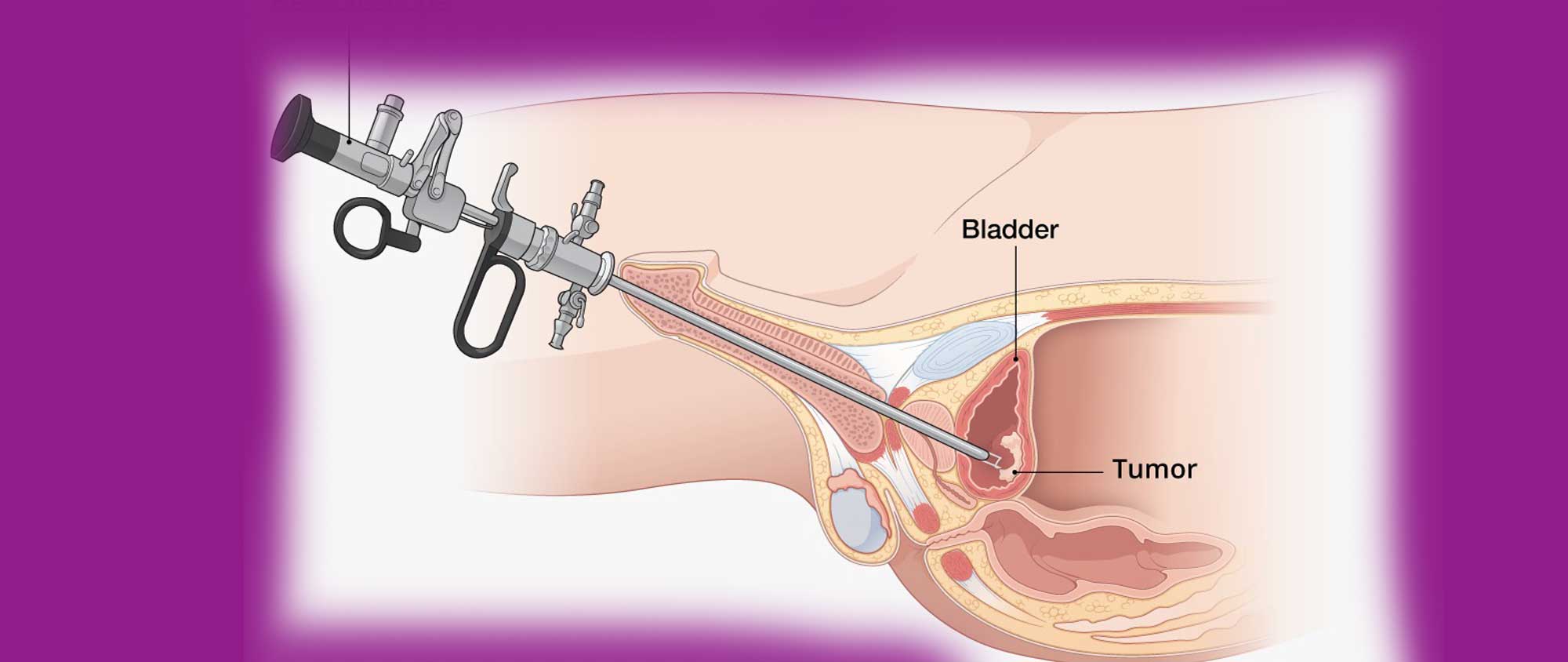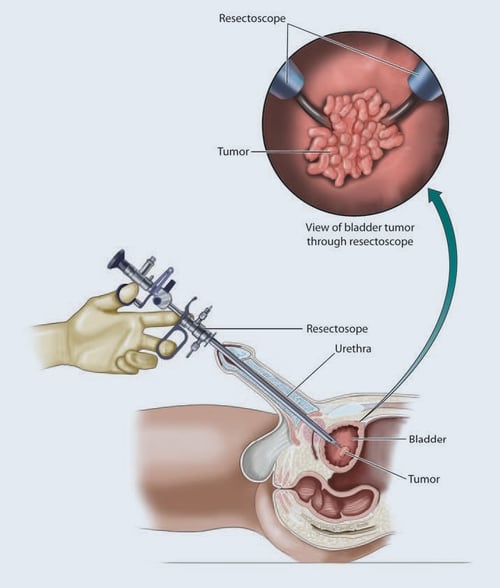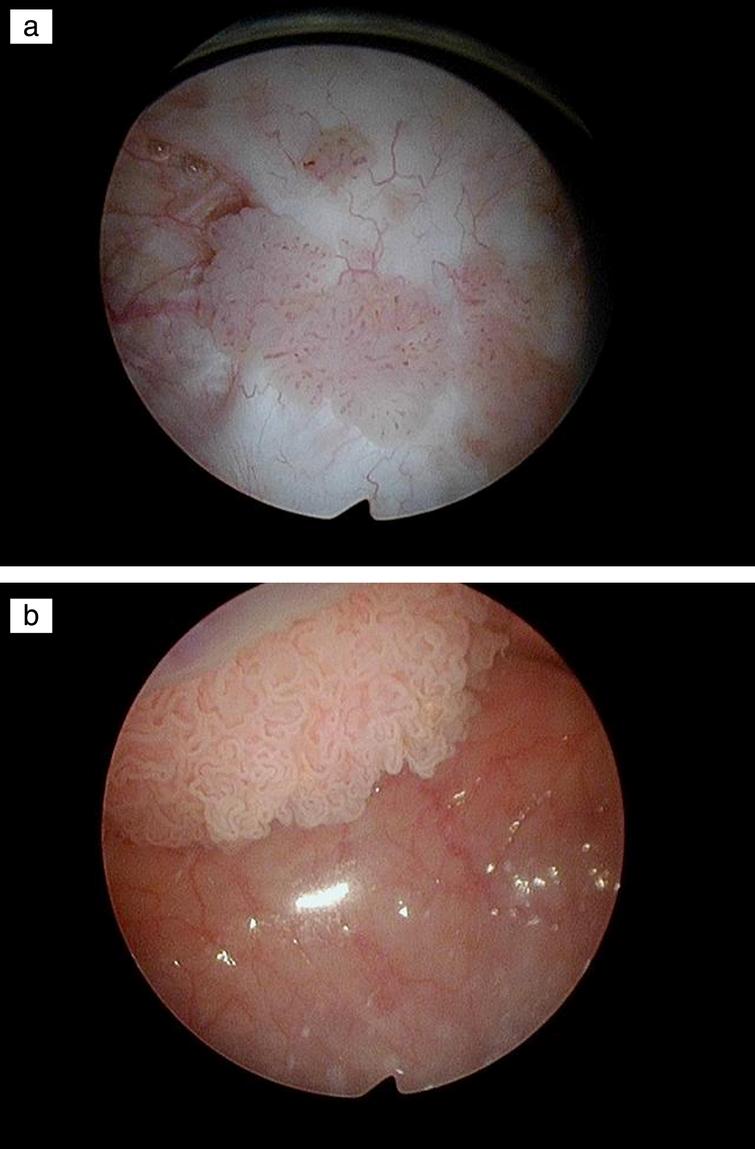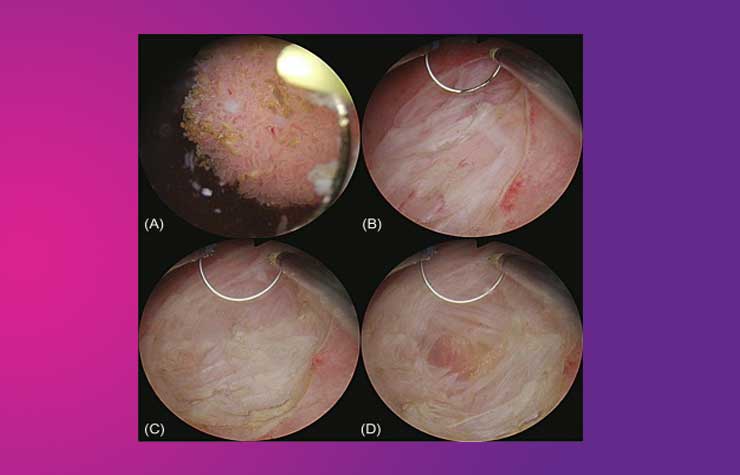The entire procedure is done with the use of an instrument called a resectoscope inserted through your penis. This allows the urologist to see the bladder from inside and the tumours that need removal. Electric current is used to cut away pieces of the tumour until it is completely removed. These are then washed out and sent away for further examination under the microscope. This operationtakes approximately 45 – 60 minutes. Because the operation takes place through the penis, there is no visible scar or wound. However, you have been cut inside and this needs time to heal afterwards, which may take up to six weeks.
Will I have any tubes after the procedure?
Yes, you will have the following:
1. Intravenous ‘drip’ into your vein to give fluids. This is likely to run for a few hours, so that you are well hydrated. This is likely to be stopped soon after you start eating and drinking normally. In rare instances, you may require a blood transfusion.
2. A catheter left in through your penis to drain the bladder. There will be irrigation fluid (saline) running into the bladder and draining out; this is to keep the bladder free of blood / clots. The irrigation is usually stopped early in the morning the following day. You will be expected to drink enough fluids to get your urine very light coloured (the average tends to be around 3 – 3.5 litres /day). The catheter is left in place for 2-3 days in total.
Will I have any pain after the procedure?
Most patients do not have pain, but experience some discomfort in the bladder area for a few hours after the operation. This can be treated with painkillers. Some patients are likely to experience spasms in the bladder – this not only causes pain in the bladder area, but can also lead to leakage of urine around the catheter. If this is troublesome, it can be treated with appropriate medication.
What should I expect when I go home and how do I take care of myself?
Most men will find that the urinary flow / stream improves almost straight away. The frequency and urgency will take a few weeks to settle down. The internal wound takes 4 – 6 weeks to heal, so you are likely to see some blood in the urine on an intermittent basis. It is best during this period, therefore, to avoid any strenuous activity (eg. lifting weights, cleaning the house, etc). Of course, you can undertake light activity like walking. It also helps if you keep drinking plenty of fluids when you see blood in the urine, to flush it away.
When the internal wound heals and the scab falls off – this can happen anytime between 2 – 4 weeks – you may see quite a bit of blood in the urine and this may be associated with burning when passing urine.



